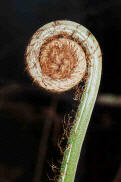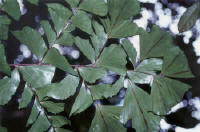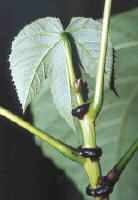Introduction
| |
|
|
 |
| |
Mature
secondary forest lines the banks of Lower Peirce Reservoir
|
Shortly after the end of the 19th century the
British colonial government in Singapore started a number of major public
works projects to supply a clean, reliable water supply to the island's
growing population. A number of dams were built in the centre of the
island, including those of MacRitchie Reservoir and Lower Peirce Reservoir
(formerly the Kallang River Reservoir). At that time the banks of the
newly dammed lakes would have been occupied by farms, orchards,
plantations and scrubland; the primary rainforest which once covered the
area would have long been cleared. Now, after decades of protection,
healthy secondary forest lines the banks of Lower Peirce Reservoir.
Lakeside Parks
There are two access points to the lake - Upper
Peirce Reservoir Park and Lower Peirce Reservoir Park. At both parks the
public can stroll along the lakeside, or take a walk across the dams
themselves. The sharp eyed may be able to spot the larger resident fish
species such as the highly regarded Arowana Scleropages formosus
and the predatory Giant
Snakehead or Toman Channa micropeltes. Snakehead species, of
which there are a number of varieties, are able to breathe out of water
for a considerable time; they are known to move from one water body to
another across moist vegetated land. Younger snakehead travel in shoals
and may easily be seen in the shallows of the reservoir.
Various species of dragonfly and damselfly are to be
found along the lake's edge. This is their preferred habitat since the
females lay their eggs in shallow waters and the larvae or nymphs spend
the first phase of their life fully underwater. The winged adults are
colourful insects and are quite harmless.
Lower Peirce Trail
| |
 |
|
 |
| |
Compound leaves and shoot of
the Tree Fern Cyathea latebrosa |
| |
|
|
|
To the north of the reservoir, leading off Old Upper
Thomson Road, is the Lower Peirce Trail. Though less than one kilometre in
length, most of which is a well-constructed wooden boardwalk, the trail
lets visitors of all ages experience the peace and quiet of the forest.
One does not have to walk far until the constant hum of city traffic has
died away and the only sounds are of birds, squirrels and chirping
insects. Along the trail are signboards which help explain the ecology of
secondary forest.
The Lower Peirce forest has long been recognised as
having a rich diversity of tree and plant species. In fact, it was not
long ago that this forested area was threatened with destruction by a
proposed golf course, thus raising the opposition of nature enthusiasts.
Thankfully the authorities relented and the golf course plan was
dropped.
| |
|
| |
|
 |
|
|
Gleichenia truncata - this
attractive branching fern grows along the waterside path |
|
| |
|
| |
|
Plants and Trees
Perhaps the most attractive plant species here are
the various ferns which thrive along the small streams and in the
waterlogged areas. These include the Tree Fern Cyathea latebrosa :
locally these can reach 4 metres in height, but given time they may reach
up to 10 metres as attained by older specimens in Malaysia.
Another attractive species is the branching fern
Gleichenia truncata - this can be found by the path along the edge of
the lake. The Fish-tail Palm Caryota sp. is common here too -
so-called because of the distinctive shape of its leaves. These attractive
trees are planted as ornamental trees in other countries.
| |
 |
| |
The Fish-tail Palm
Caryota sp. |
| |
|
The Mahang or Ant Plant Macaranga triloba (so
called because of the three lobes which make up the leaf) is an
interesting example of symbiosis: the plant provides housing for a species
of ant in its hollow, swollen leaf shoots and in return the ant protects
the plant from leaf-eating insects. Examples of this plant are clearly
labelled along the trail.
Sadly a colony of Raffles Pitcher Plant Nepenthes
rafflesiana along the Cyathea Trail has been virtually destroyed by
the public, who detour from the boardwalk for a closer look.
 |
|
|
The swollen leaf stalks of the
Mahang Plant Macaranga triloba |
|
| |
|
Forest dwellers
Squirrels are common in the forest, and these
include the Plantain
Squirrel Callosciurus notatus and the smaller
Slender Squirrel
Sundasciurus tenuis. The latter can sometime be seen in groups of four
or five in the early morning or late afternoon feeding on fruits and
insects (including ants). The other common mammal is the
Long-tailed Macaque
Macaca fascicularis: this species of monkey remains very common in
Singapore's secondary forests.
Frogs and toads may be heard along the streams,
particularly after a rainstorm. These will be hard to see as they are
hidden by the leaf litter. Also, the casual visitor is unlikely to see
much bird life, as forest species are shy. However spend some time by the
water's edge to admire the grace of the Pacific Swallow as it swoops down
to take small insects from the lake's surface. Wait long enough and you
may even get to see a Brahminy Kite or even a White-bellied Fish Eagle
expertly plucking fish from the water.
Take a break
At the end of a walk take a picnic at the Lower
Peirce Reservoir Park where there is ample seating and pleasant views. Or
visit the nearby hawker centre on Thomson Road where Chicken Rice can
still be had for just two dollars ! Still hungry ? Try the excellent Roti
Prata (fried Indian bread and curry sauce) at Casuarina Road.
|